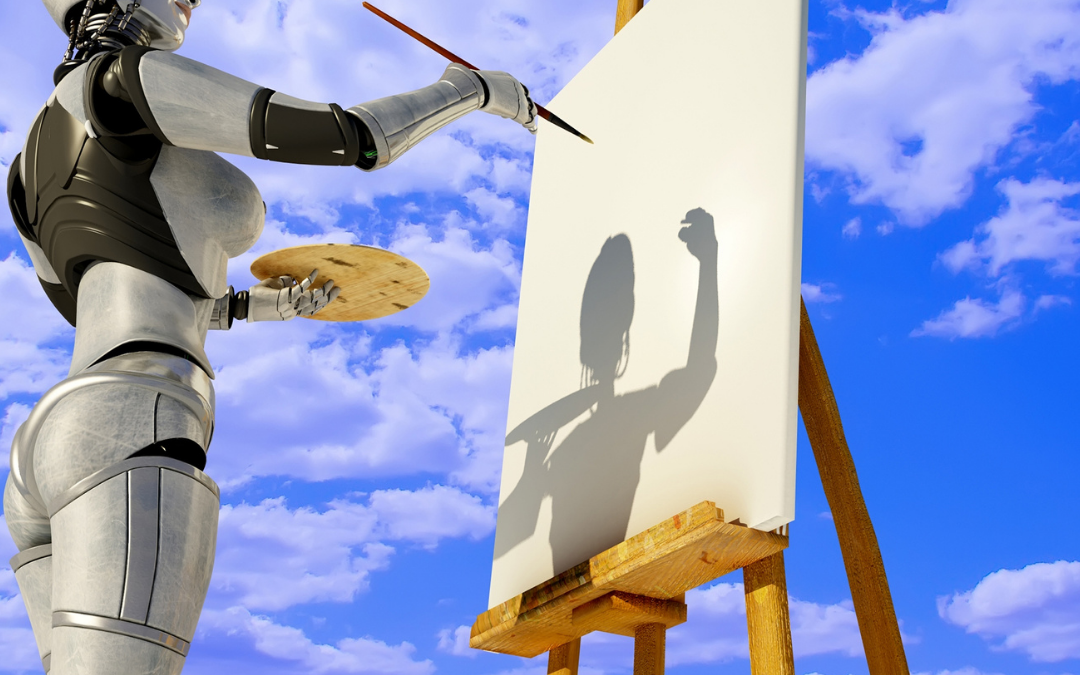This is the thirty-third article in a series dedicated to the various aspects of machine learning (ML). Today’s article will detail a major development in the field of artificial intelligence, which is the restoration of art. We’ll go over some of the key machine learning concepts behind the work of AI-assisted art restoration.
About ten years ago in Spain, a fresco painting of Jesus Christ wearing a crown of thorns, a variation on a painting-world motif called “ecce homo” (“behold the man”), was in poor shape. Deteriorating because of moisture on the wall of the church that it was housed in, there was a clear need that the painting was in need of restoration. The painting was a local favorite, and not just for churchgoers as well—the painting was done in the 19th century by a painter named Elías García Martínez, making the work a piece of interest for even the most secular of history buffs and art enthusiasts alike.
With the painting in such a poor state, there was a call for restoration. After a little while, a churchgoing woman in her eighties who loved the painting stepped forward, yet it was without the approval of authorities in charge of the work, apparently. It was like a scene in a bestselling novel: An elderly artist steps up to preserve a revered work of art, saving not only the artwork but affirming the meaning of art, all in defiance of authorities.
Except this didn’t happen in a bestselling novel, but actually the real world. As it turns out, when a nonprofessional parishioner takes an unsupervised shot at art restoration, the results are likely to be less than perfect. Unfortunately for our octogenarian protagonist, the end result of the restored painting more resembled a monkey than anyone’s lord and savior.
Rather than relying on a human to do the painstaking work of restoration, the authorities could have hopped on the AI bandwagon instead and let a machine learning agent do the dirty work. After all, a collection of paintings by Gustav Klimt were recently restored through machine learning methods.
“But,” the authorities may ask, “how exactly would a computer tool be able to restore a masterpiece?”
It’s a question that the rest of this article will be devoted to demonstrating, by using Google Arts and Culture’s machine learning methods for restoring the Klimt paintings as a template.
Restoring the Classics
When dealing with any one painter in a restoration project, the first thing to do is to have the machine learning agent be familiarized with the other works by the artist. What is the artist’s style? If the artist experimented with many styles over the years, it will be helpful to adhere closest to the paintings done within the same style period as the artwork of interest. One of the main points in interest is the colors used in those other paintings, and use them as “reference colors.”
When a painting is being restored by a computer, the painting-in-question may need to be “recolored,” as was the case with the Klimt paintings that Google restored. The paintings were scanned in black and white, but according to news articles and other data about the destroyed paintings, there were certain quirks to the paintings that were unintuitive to a restorer. For example, the sky in one of the paintings turned out to be painted a shade of green, rather than blue like we are used to.
So, data collection is one of the key components for successful art restoration, as not every artistic choice made by a painter will align with common sense or reality, like the sky being blue.
When it comes to analyzing the painting itself, technological innovations like X-ray and digital photography can be used to gain incredibly detailed data about even the most minute details in a painting, down to the smallest brushstrokes.
Luckily, not every painting that needs to be restored has been lost, and reliable “scans” of the paintings can be used to inform an algorithm’s recreation of a specific missing strip. It is all a matter of details, at the end of the day, and what matters is the level of detail that an agent can get from inspecting a painting. With an AI agent’s unprecedented data collection abilities and closer-than-close inspection capabilities, it is clear that the future of art restoration will most certainly involve AI.


Recent Comments